Booking your Nantucket doormat trip is only the first step to success.
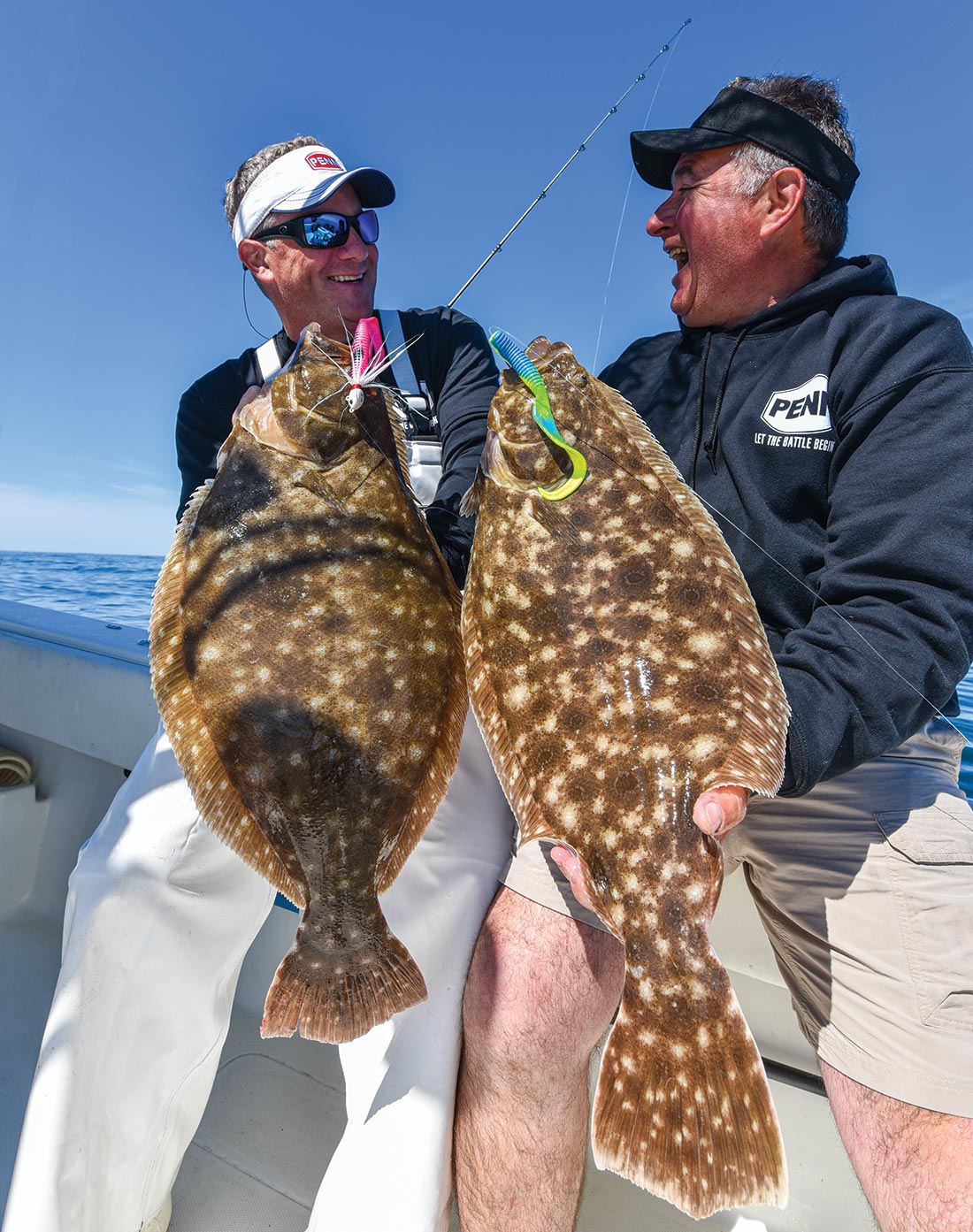 The trip is booked; the roster of fishing buddies is assembled, what next? Ah yes, the preparation.
The trip is booked; the roster of fishing buddies is assembled, what next? Ah yes, the preparation.
What needs to be done in order to be 100% planned and ready for the doormat trip of the summer? The answer is, plenty.
First, decisions have to solidified regarding driving and hotel arrangements. If the passengers range from one to four, you’ll need to decide on a vehicle that can accommodate all the people and the gear. Usually an SUV or an extended cab pick-up truck works, though if six people are heading to Cape Cod, then two vehicles are often needed.
It’s important to bring what you need without over packing, a daunting task for many. If space is tight, duffle and tackle bags for clothes and gear are better than hard cases and boxes. They are more pliable and easier to cram together like a puzzle in the back of truck. If the bags are to travel in a pick-up, water proof is the only way to go.
Lodging near the marinas is actually reasonable considering the region is a significant tourist destination. On non-holiday weekdays, a basic room containing two double beds can be found as low as $100. During the weekend, expect a price bump. It’s essential to ask about the hotel’s cancellation policy. Most provide a full refund up to 72 hours before the booking. If the weather and seas appear borderline, I often consult my group in order to make decisions as this can be tricky. If the reservation is retained and the trip ends up cancelled at the last moment, we all take a bite, not just the guy who laid down the credit card.
Another option is to simply roll into town without a reservation. This isn’t a problem in August and often works in July as well, but keep in mind you might get shut out of places that you find more favorable.
What to Bring
The unbelievable doormat fluke opportunities in and around Nantucket is no longer a secret in the Northeast or Mid-Atlantic region. In fact, many of The Fisherman subscribers in recent years hoping to add a double-digit fluke score for the Dream Boat Fishing Challenge plan to make the trip once or twice each year. However, even in the summer time, a Nantucket fluke trip can experience all four seasons of weather.
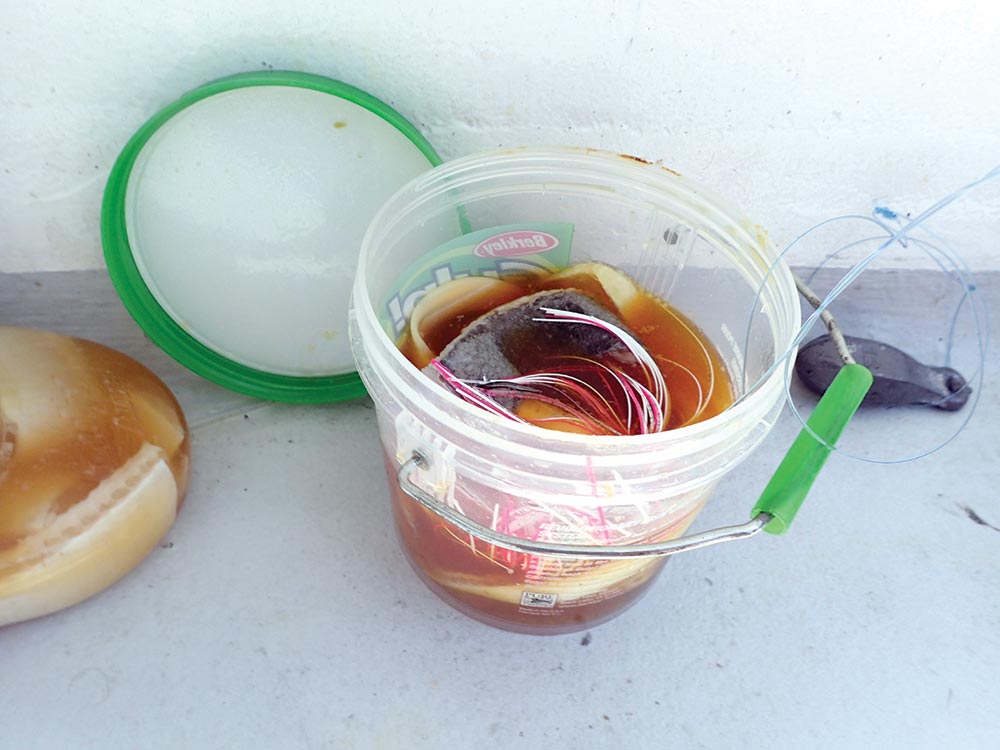 |
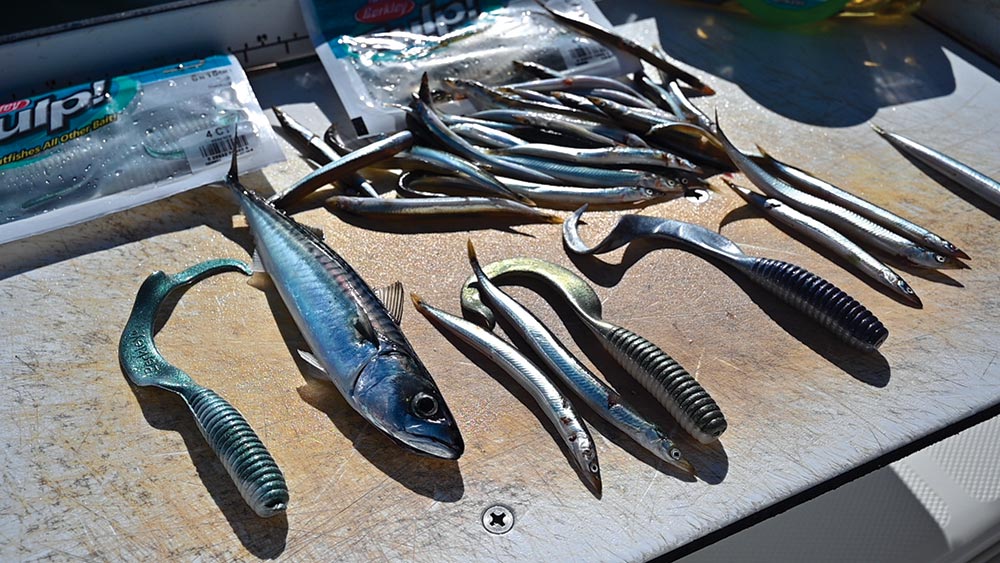 |
|
Anglers often prepare Gulp containers with all their favorite colors so they have exactly what they need, including enough “juice” in the bucket to recharge baits between drifts. |
|
Anglers should carry t-shirts and sweatshirts, long pants and shorts. Bibs are necessary if rain or dense fog forms. As the hot summer air meets the cold, nutrient-rich water, fog becomes a regular occurrence. Footwear for a wet deck is necessary. Splashing seas, raw water wash down pumps and that fun fog create a boots requirement. Anglers will do fine with the low or mid-cut version as opposed to those that cover your entire shins.
In general, this is not novice fishing. Most anglers range from intermediate to full-on doormat expert. Charter captains from other states often choose this trip for their own, personal getaway. That said, anglers are best to bring two to five rods with a median number of three to four, depending on what the boat rules are and the vessel’s ability to store unused rods.
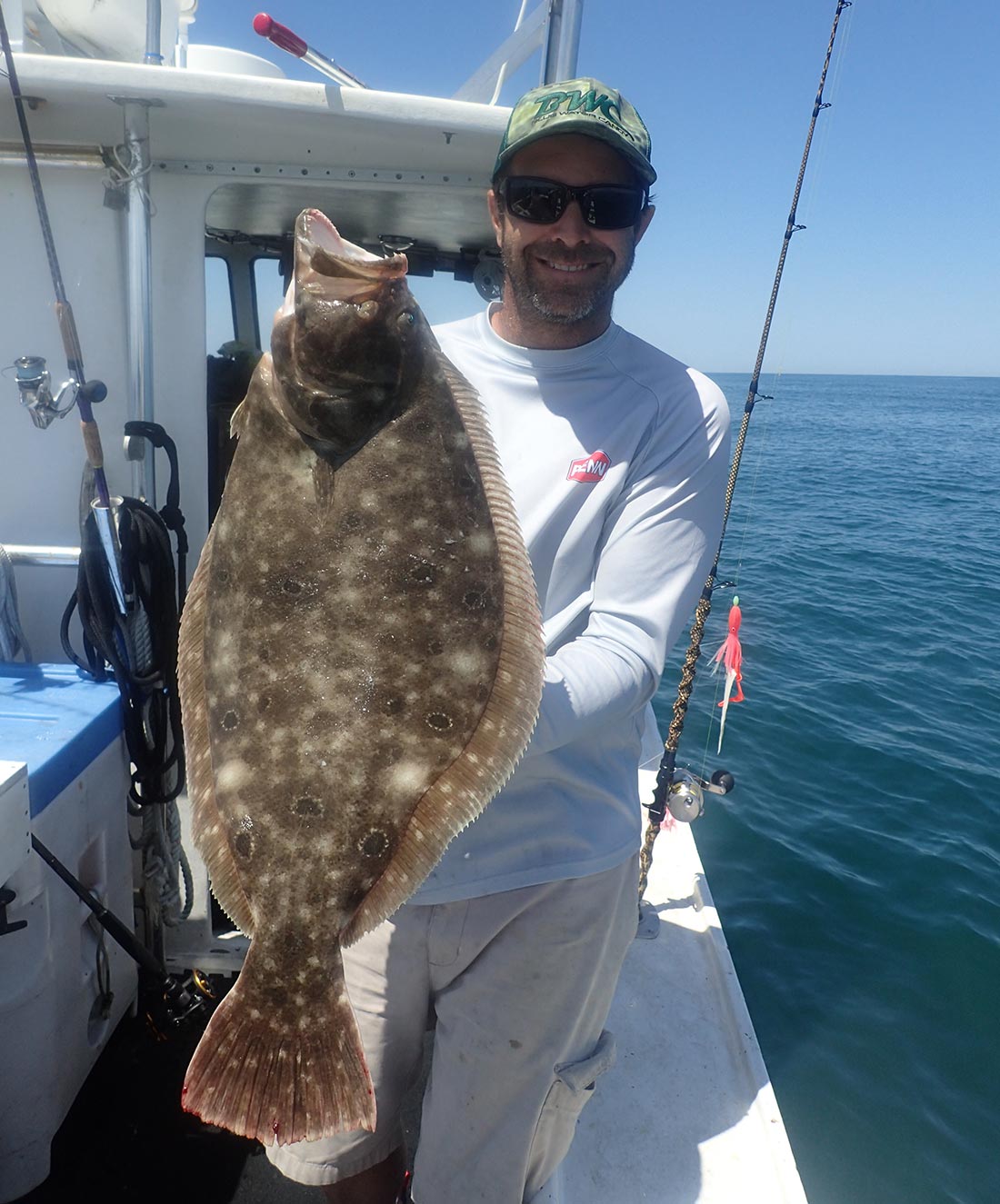
In my opinion, at least one rod must be able to handle lead weight up to 24 ounces in the event of an intense drift. Some charter skippers bump troll in order to mitigate a speedy drift; however, some captains do not. I’ve heard of anglers using mojo balls for weights on one of the popular party boats that fishes the shoals. That’s the extreme though.
Many folks come armed with a lighter action rod coupled a spinning reel for casting. It’s not uncommon for raging current to turn into dead stillness with no wind or tide. Some of the best fishermen turn to casting presentations upstream and slowly plucking back to the boat. Even in seas over a hundred feet deep, it remains an efficient tactic. Furthermore, a contingent of anglers will cast and retrieve even when drift conditions are ideal due to the successful nature of the tactic.
So that’s a heavy duty, beef stick and a casting rod on the lower end of the stoutness scale. Now, that leaves the need for rod strength in between the two extremes. An average trip will see anglers bouncing terminal gear with weights between 6 and 14 ounces. The rod that resides between your modern-day, slimmed-down version of a broomstick and a light-weight, long caster will be used more than any other on a typical day. If you are allowed to bring a fourth rod, it’s best to carry a two of these middle-weights.
Tackling the Essentials
Anglers are best to have their outfits rigged and ready to go once on the grounds. The boat ride out can be two to three hours so if an angler didn’t get the terminal rigging accomplished ahead of time, they can do it on the way to the fishing grounds. Having rods ready means more time fishing; more time fishing means there’s more chances for that double digit personal best doormat to see the offering.
Sometimes I’ve carried extra rods and tackle and left it at the hotel room or in my vehicle. I like having back-ups due to any failure. Broken rods and eye inserts that fall out can leave you short of the normal quiver of sticks. On a recent trip, an experienced fisherman that came with our group must have had damaged insert that caused the line to sheaf and break. He kept trying to use the rod when it should have been retired. If on a multiple day trip, full examination can take place at the hotel that night to avoid such an onboard crisis.

Subscribers to The Fisherman coming in to the region from out of state looking to register a Dream Boat Fishing Challenge fluke can bring their fish (packed in ice) back home to their favorite tackle shop for weigh-in, or they can bring to one of these local shops.
Hyannis, MA
Sports Port | 508-775-3096
Falmouth, MA
Falmouth Bait & Tackle | 508-457-0700
Buzzard’s Bay, MA
Maco’s B&T | 508-759-9836
Red Top Sporting Goods | 508-759-3371If you’re still looking to book a doormat charter this season, try the following.
Harwich Port, MA
Jail Break Fishing Charters
Capt. Seamus Muldoon | 508-237-392
Fairhaven, MA
Bounty Hunter Charters
Capt. Eric Morrow | 774-766-1228
Yarmouth, MA
On time Charters
Capt. Jimmy “The Greek”
[email protected]
Koutalakis | 617-721-7886
Hyannis, MA
Helen H Deep Sea Fishing
Capt. Joe Buck | 508-790-0660
Chatham, MA
Fish Chatham Charters
Capt. John Clothier | 508-237-7210
Falmouth, MA
Machaca Charters
Capt, Willie Hatch | 508-360-4613
Specialized rodholders allowing the rods to stand up in the truck are the best way to carry fishing rods on the journey to Cape Cod. It’s best if rigs are left off the rods until the morning of the trip. Between, bugs, debris and vibration, leaders can take a beating especially if the trip is long. If rod systems within the vehicle aren’t available, then wrapping towels around the rods in order to create a cushion will work.
When it comes to reels, I make certain to have an extra in my gear bag. Realistically, there is little time to change one out during the outing unless the captain makes a big move. Fooling around with this kind of change during fishing time can cost anglers doormat bites. And since anglers are carrying multiple rod set-ups, the extra reel hopefully can remain as extra – at least for that particular outing.
Berkley Gulp reigns king as fluke bait on Nantucket Shoals. The 6-inch grub is, by far, the most favored offering by captains and veteran shoals clients. Based on experience and conversation, it’s best to have about five bags of each color per trip on the water. If it’s a two day set, one can reload that evening in preparation. Most anglers carry some level of excess of Gulp, which is fine, so as long as the boat has enough space for it to be tucked away. The mainstay colors have a proven catch record; white, glow, pink shine, nuclear chicken, salmon red and new penny are all doormat destroyers. The new Gulp colors continue to make a big splash as well. Within a few feet of me, I watched red fleck, sardine, mackerel and straight pink nail monster mats over 10 pounds last season. Alternatives to the grub that have produced robust results include the 6-inch swimming mullet and the nemesis.
Most anglers keep a supply of Gulp in a container at their feet or within arm’s reach. That way, fishermen can quickly rebait without losing time in the water. Then excess Gulp in bags can be stowed in a reserve capacity in a container that’s below deck. There are no snags of the shoals, but thrashing fluke, determined dogfish or benevolent bluefish will occasionally ruin a Gulp.
A Natural Question
Some anglers wonder if they need to carry additional natural bait. It’s not necessary as all the boats carry an array of meat and strip baits. Spearing and lengths of squid are supplied, but if a fisherman wants to fish a whole squid, they’ll need to bring their own box. Peruvian smelts are preferred by some anglers, but aren’t something every charter provides. Moreover, if a prolonged blow keeps charter captains at the dock, they might be forced to freeze otherwise fresh bait. Therefore, anglers could bring some fresh if they felt the need. The truth is: it’s not necessary. Shoals captains are dialed in and will get anglers on the fish. The flip is that fishermen are boy scouts at heart and like to be prepared. Go on one charter trip where inadequate bait was the rule and you’ll never think quite the same.
As for carrying terminal rigs, it’s best to have a reasonable supply at the ready. If anglers wait for the captain or mate to retie a chicken rig, there’s a good chance at losing valuable fishing time. Those guys are busy netting fish or tweaking the vessel’s position to hit the right bottom topography. They’ll tie rigs, but the cost comes in time on the bottom. Fluorocarbon isn’t necessary, but when I see spools of it on the most reputable captains’ dashboards, it definitely nudges me that way. These guys do this every day so they know what the advantages are.
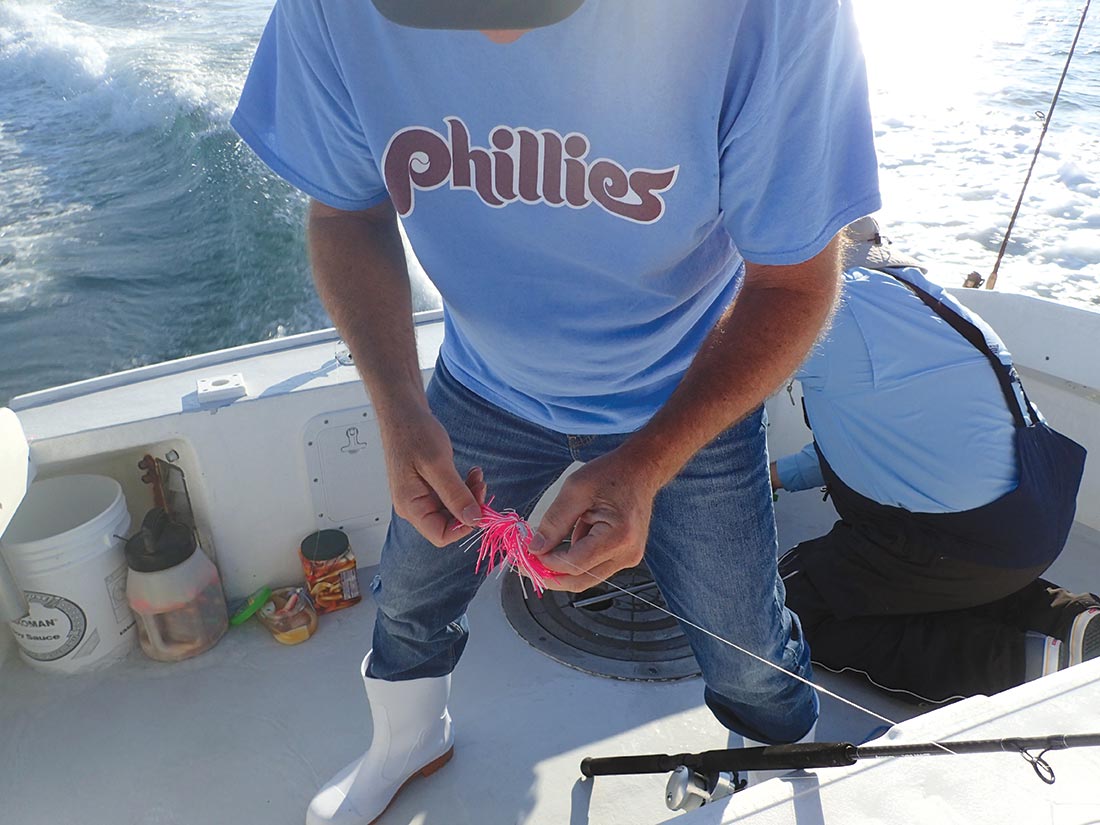
Anglers need to know the boat’s sinker policy. Many boats supply weights up to a certain amount – usually 10, 12 or even 16 ounces. But if the current is steaming, it’s good to have a couple of 14-, 16- and 20-ounce bank sinkers at the ready.
Since chicken rigs – simply glorified top and bottom rig with two hooks – are the mainstay, it’s important to have the right teasers. Backwater Baits produces a signature line of poison tails that have been the “go-to” for many years on the shoals now. They are the most proven commodity and anglers are best to carry a handful in each color, with 1/4- and 1/2-ounce sizes seeming to fit the bill for the chicken rigs.
It’s important to be aware if the captain cleans the fluke. Many operations clean the fish on the way back to the dock, but some require anglers to take their fish whole. This plays into what size cooler and how much ice a fisherman should bring. Bagged up fillets are a lot easier to take home in the cooler than whole, doormat fluke. Or fishermen can clean their fish at the dock after the trip has ended, thus getting this chore out of the way. Just keep all this in mind when it comes to Dream Boat Fishing Challenge trips; if you’ve got a potential prize-winner, make sure you’ve got that fish packed in ice and set to the side for dockside weigh-in later.
Heading to Cape Cod fully prepared will help any angler make the most of their doormat trip of a lifetime. Spend the off-season or random, down moments making sure everything is in order. Then doormats beware!



